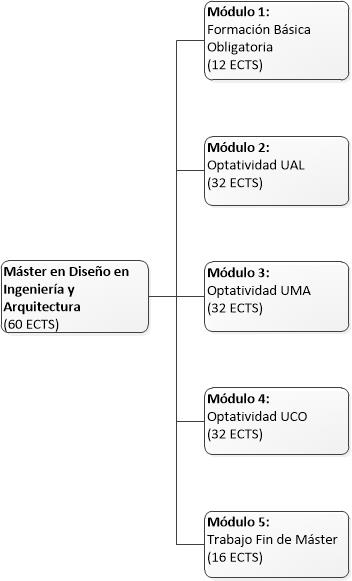Structure and distribution of credits
{{pre.error[0].message}}
{{pre.error[0].message}}
| Course | Basic | Mandatory | Optatives | Curricular internships | End of Studies Dissertation | Total |
|---|---|---|---|---|---|---|
| {{curso}}º | {{c.credects}} | {{c.credects}} | {{c.credects}} | {{c.credects}} | {{c.credects}} | {{creditos | map: 'credects' | toArray | sum}} |
| Total | {{ct.credects}} | {{ct.credects}} | {{ct.credects}} | {{ct.credects}} | {{ct.credects}} | {{cre.creditos_totales | map: 'credects' | toArray | sum}} |
To obtain the degree, students must successfully complete at least 60 ECTS which are distributed in 12 ECTS compulsory training, 32 ECTS elective methodological and specialisation subjects and 16 ECTS of the Master’s Thesis.
The 12 compulsory ECTS credits are taken by all the degree’s students and are composed of three introduction to research subjects of 4 credits each, each taught from one of the three universities.
The 32 elective ECTS provide students with training on methodological and instrumental contents of specialisation. Students will choose the elective subjects that are of interest to them from the teaching offer taught at the three universities. However, although there are no mentions in the degree by specialisation, the offer of elective subjects has been designed so that students who take all the elective subjects of a single university are trained in one of the following profiles or orientations:
Finally, the 16 ECTS of the Master’s Thesis will complete the student's training in the degree. Each student shall comply with the particular regulations, deadlines and procedures applied to the Master’s Thesis at the university in which he or she is enrolled.
The master's curriculum is oriented towards research and methodological specialization in the field of design. With the intention that the master's degree can give access to doctoral studies, the curriculum guarantees a minimum of 32 ECTS of methodological and research subjects, since the 12 ECTS of compulsory training have a research character and the entire offer of elective subjects is composed of specialisation methodological and instrumental subjects. Furthermore, the 16 ECTS Master’s Thesis has a research work format in all cases.
